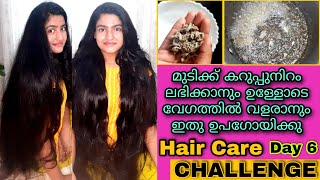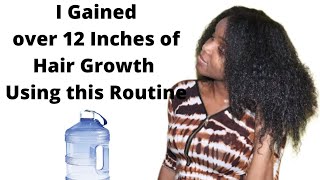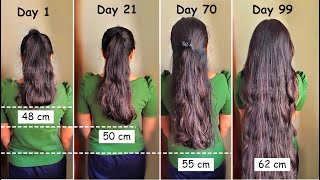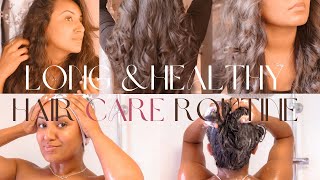Is 4a Hair Easier To Care For Than 4b Hair?

That’s like asking, which one makes us more fat, cake or ice cream? Or, I will give you one better, who would you say no to if they asked you on a date, Michael Ealy or Denzel Washington?
Hey, I’m married not stupid. shouts across the room to the hubby:
“Hey Bae tell the homie we booked this weekend, we have a date both Friday and Saturday night, dress nice!”
You get it right? If you find yourself in a conversation about the level of difficulty when caring for any hair type it will be one long endless conversation. The truth is what you might think is so difficult might be the very thing she finds easy and what she tells you is her pain point you might think, oh she is exaggerating because you never had that problem.
To answer the question, is 4A easier to care for than 4B? Absolutely not! Both have their ups and downs, its a wash, no contest, a draw, everybody wins, cake and ice cream both make us fat, nobody says no to Denzel or Michael!
Why would this even be a question
To be quite honest you might think the thought of comparing the two textures as utterly ridiculous, and we would be be slightly hypocritical if we didn’t see it as ludicrous ourselves. The thing is there is a slight difference between a 4A hair strand and that of 4B, so if we must split hairs, no pun intended we will highlight the difference.
Type 4A is tightly coiled hair that has an S pattern and it can retain more moisture than the 4B hair type. A perfect example of a 4A naturalista is Esperaza Spalding. 4B on the other hand does not have a distinct curl pattern it is often described as shaped like a ‘Z’ with very sharp angles and the hair feels like cotton, a perfect example of a celebrity with this curl pattern would be Lauryn Hill.
Notice that the difference between the two hair types are just structural so far, there is no detail on difference in hair care so lets jump right in and look at that as well.
How to care for 4B and 4A similarities, differences and everything in between
►Moisture
Afro textured hair generally needs moisture because of the structure of the strand, whether an S pattern or Z , the moisture that the scalp provides does not travel all the way down the strand because it is ten times easier for moisture to travel in a straight line versus a loop or slant. With that said we compensate for that by adding water or water based products to our hair pretty often.
 If you take an S versus a Z and try to determine which one would make it easier for moisture to travel, the difference would be so minute it wouldn’t even be worth the discussion. The point is you cant trust that your strand will be adequately moisturized just because yours looks like an ‘S’. We have to moisturize daily, regardless of our hair type.
If you take an S versus a Z and try to determine which one would make it easier for moisture to travel, the difference would be so minute it wouldn’t even be worth the discussion. The point is you cant trust that your strand will be adequately moisturized just because yours looks like an ‘S’. We have to moisturize daily, regardless of our hair type.
Not to mention we are all subject to the same environment, we all have to deal with the sun and the change in season so the tips and knowledge we receive about general hair care as we navigate the seasons, the dew points, and other environmental factors can be very beneficial to all hair types.
►Porosity
This brings us to porosity, are you a strainer? Because if you are you will not retain moisture as much as a person who has low porosity or normal porosity. We always say the best hair typing system is porosity because it really hones in on how your hair retains moisture, how you need to seal your hair and what regimen you need to know to get back to normal.
High porosity strands (strainers) need more moisture more often than normal strands. They also need more protein than normal porosity hair and low porosity hair. How your strand is shaped does not tell us how your strand will react to the moisture it needs to sustain itself, making porosity the center of hair care.
►Scalp care
Scalp care has nothing to do with curl pattern, and guess what? The scalp is the center of hair growth, this is where all the magic happens. This means how you cleanse your scalp and what you put on your scalp becomes so much more important than how your hair strand looks.
Scalp care isn’t easy for anyone and how your scalp behaves is pretty unique because alot of what happens with the scalp whether its dandruff, dry scalp, eczema, hair loss or even hair thickness just depends on our biological makeup, in some cases what we eat, and what we are doing to our scalp individually.
 Again, knowledge is power and there is a ton of information that can help with keeping the scalp healthy and learning just how it works.
Again, knowledge is power and there is a ton of information that can help with keeping the scalp healthy and learning just how it works.
►Retaining length
When we talk about length retention we are referring to making the best of your hair as it grows. All hair grows unless there is something seriously wrong with your health wise, so our goal in hair care is to retain as much length as we possibly can.
Retaining length is tricky for most of us but not impossible. The 4 category of hair will see more retention with less manipulation, this means protective styling is our number one priority.
You will hear noise saying 4 category hair doesn’t grow or retain length, but this claim is just not true, retaining length techniques will differ for 2s versus 3s versus 4s but there are some high on the list similarities as well.
For example, high use of heat and chemicals on your hair can cause you to stop retaining length, loose hair that can snag on clothing and other things will prevent retention, exposed ends will affect length retention, not trimming and caring for your hair will affect length retention. This stuff is true across the board.
►Fine hair versus coarse hair
Is your hair coarse or fine? Coarse hair refers to those of us with very thick strands, and fine hair refers to those of us with strands that have small widths. When your hair is coarse it is structurally stronger than when your hair is fine, so when you add this to the equation it can through curl pattern right out the window.
For example if your hair is fine, lighter moisturizers and sealants will work best in comparison to heavy ones because you never want to weigh your hair down. On the opposite end of the scale coarse hair can take heavier products and be just fine.
Hair care is never something we can put in a box, there is alot of grey area despite the curl patterns that we have. I think this is the probably the biggest flaw with the hair pattern system because it only considers our structural shape differences but it doesn’t consider porosity, how the strand itself looks or all of the other things we have discussed so far.
If the shape of your hair strand matters to you then the hair typing chart is probably very important for you, but for all other aspects of hair care there is alot more to take into consideration. If you find yourself in a conversation trying to determine who has more work 4A or 4B, you are probably better off not having the discussion at all.




